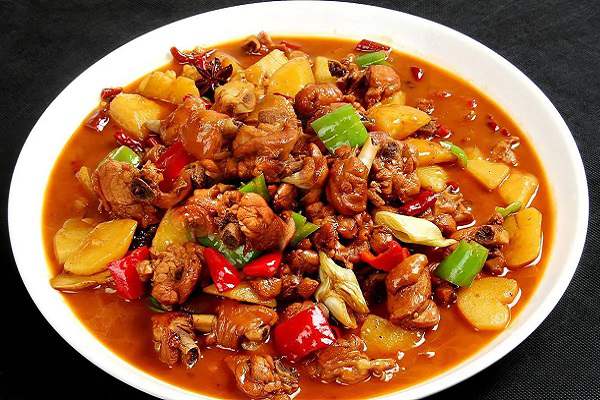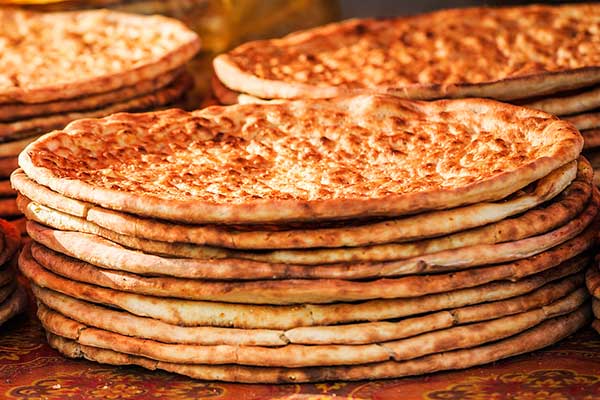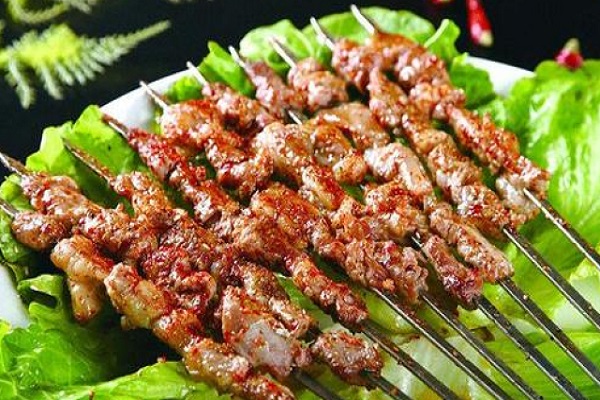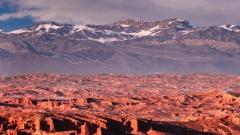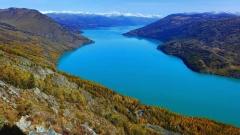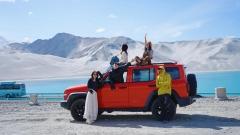Urumqi, the capital of Xinjiang, is more than just a city—it’s the vibrant heart of western China. Surrounded by the Tianshan Mountains and desert landscapes, Urumqi is a fascinating mix of cultures, cuisines, and histories. As the world’s most inland major city, it serves as the gateway to the Silk Road and a base for exploring Xinjiang’s vast beauty. Whether you’re here for adventure, culture, or food, this guide will help you make the most of your Urumqi journey.
Why Visit Urumqi?
Urumqi offers a unique cultural blend of Han, Uyghur, Kazakh, and Hui traditions, making it one of China’s most diverse cities. It’s the perfect place to experience the contrasts of Xinjiang—snow-capped peaks, ancient bazaars, spicy street food, and modern skyscrapers all within reach.

Urumqi
Beyond its urban charm, Urumqi’s location provides easy access to some of China’s most stunning natural wonders, including Heavenly Lake and the vast deserts that stretch toward Central Asia.
Best Time to Visit Urumqi
-
Spring (April–June): Mild weather and blooming landscapes—great for sightseeing.
-
Summer (July–September): Warm and sunny; perfect for mountain hikes and fruit season.
-
Autumn (October–November): Colorful foliage in the Tianshan Mountains and cooler temperatures.
-
Winter (December–March): Snow-covered scenery, ice festivals, and nearby ski resorts for winter sports lovers.
Tip: Summer and autumn are the best seasons for outdoor travel, while winter offers a peaceful, less-crowded experience.
Top Attractions in and Around Urumqi
1. Heavenly Lake (Tianchi)
Just 110 km from the city, Heavenly Lake is one of Xinjiang’s top scenic spots. Set against the snowy peaks of the Tianshan Mountains, this turquoise alpine lake is surrounded by dense forest and meadows. You can hike around the lake, take a boat ride, or stay overnight in a Kazakh yurt for a taste of nomadic life.

Heavenly Lake (Tianchi)
2. Xinjiang International Grand Bazaar
A must-visit landmark in downtown Urumqi, this lively bazaar combines shopping, dining, and entertainment. Explore stalls selling Uyghur handicrafts, dried fruits, carpets, and jewelry. Don’t miss the evening performances of traditional music and dance.
3. Xinjiang Museum
This is the best place to understand the region’s Silk Road heritage. The museum houses ancient mummies, ethnic costumes, and archaeological treasures from various dynasties, helping visitors grasp Xinjiang’s complex cultural history.
4. Hongshan Park
Located in the city center, Hongshan (“Red Mountain”) offers panoramic views of Urumqi’s skyline. It’s also a peaceful spot for a stroll, especially at sunset when the city lights begin to glow.
5. Nanshan Pastures (Southern Mountain Grasslands)
Just an hour’s drive south, Nanshan is a summer escape filled with green meadows, rivers, and yurts. Local herders graze their livestock here, and visitors can enjoy horseback riding, picnics, and authentic Uyghur or Kazakh meals.
6. Dabancheng Wind Power Station
On the road between Urumqi and Turpan lies one of the world’s largest wind farms. The towering turbines against the desert landscape make for a surreal photo opportunity.

Food and Local Cuisine
Xinjiang cuisine is a highlight of any trip to Urumqi—rich, spicy, and influenced by Central Asian flavors.
Must-Try Dishes:
-
Xinjiang Lamb Kebabs (Yang Rou Chuan): Juicy, smoky skewers seasoned with cumin and chili.
-
Big Plate Chicken (Da Pan Ji): A spicy stew of chicken, potatoes, and peppers, often served with handmade noodles.
-
Laghman (Hand-pulled Noodles): A staple Uyghur dish topped with vegetables and beef.
-
Nang Bread: A crusty, round bread baked in a clay oven.
-
Sweet Melons and Grapes: Urumqi’s summer fruits are famous across China.
Best Dining Spots:
Head to Erdao Qiao Night Market for street food, or try local restaurants like Mirage Uyghur Restaurant or Dolanhui, where you can enjoy authentic cuisine and live music.
Transportation and Getting Around
Getting to Urumqi:
-
By Air: Urumqi Diwopu International Airport (URC) connects with major Chinese cities like Beijing, Shanghai, Chengdu, and Xi’an, as well as international destinations such as Almaty and Tashkent.
-
By Train: High-speed trains link Urumqi to Lanzhou, Xi’an, and beyond. Traditional overnight trains are also available for budget travelers.
-
By Road: Long-distance buses run to Turpan, Altay, and Kashgar, but distances are vast—flying or taking the train is often more convenient.
Getting Around:
-
Metro: Urumqi’s modern subway system makes city travel easy.
-
Taxi and Ride-hailing: Affordable and convenient for short distances.
-
Car Rental: Ideal for side trips to Heavenly Lake or Nanshan.
Where to Stay
Urumqi offers accommodation for every budget:
-
Luxury: Sheraton Urumqi Hotel, Hilton Urumqi — modern comfort and great views.
-
Mid-range: Yilite Hotel, Grand Mercure Hotel — good facilities and central locations.
-
Budget: Capsule hostels and local guesthouses around the Grand Bazaar offer authentic experiences.
Tip: Book early during summer and festival seasons, especially during Id Kah Festival or Eid al-Fitr.
Safety and Travel Tips
-
Security Checks: Xinjiang has tight security; expect ID checks and bag scans at public places.
-
Weather: Carry layers—Urumqi’s temperature can vary widely between day and night.
-
Respect Local Customs: Dress modestly when visiting mosques or ethnic communities.
-
Currency: Cash and mobile payment (WeChat, Alipay) are both widely accepted.
Day Trips from Urumqi
If you have more time, consider exploring nearby attractions:
-
Turpan (2 hours): Ancient ruins, grape valleys, and desert landscapes.
-
Karamay (4 hours): Home to the surreal Ghost City rock formations.
-
Tianshan Grand Canyon: A dramatic red rock gorge just a few hours away.
Conclusion
Urumqi is more than just a stopover—it’s a vibrant introduction to Xinjiang’s diversity. From the turquoise waters of Heavenly Lake to the colorful bazaars and rich cuisines, the city offers a perfect balance between nature, culture, and modern comfort. Whether you’re starting your Silk Road adventure or seeking authentic cultural experiences, Urumqi is truly the gateway to western China’s soul.



